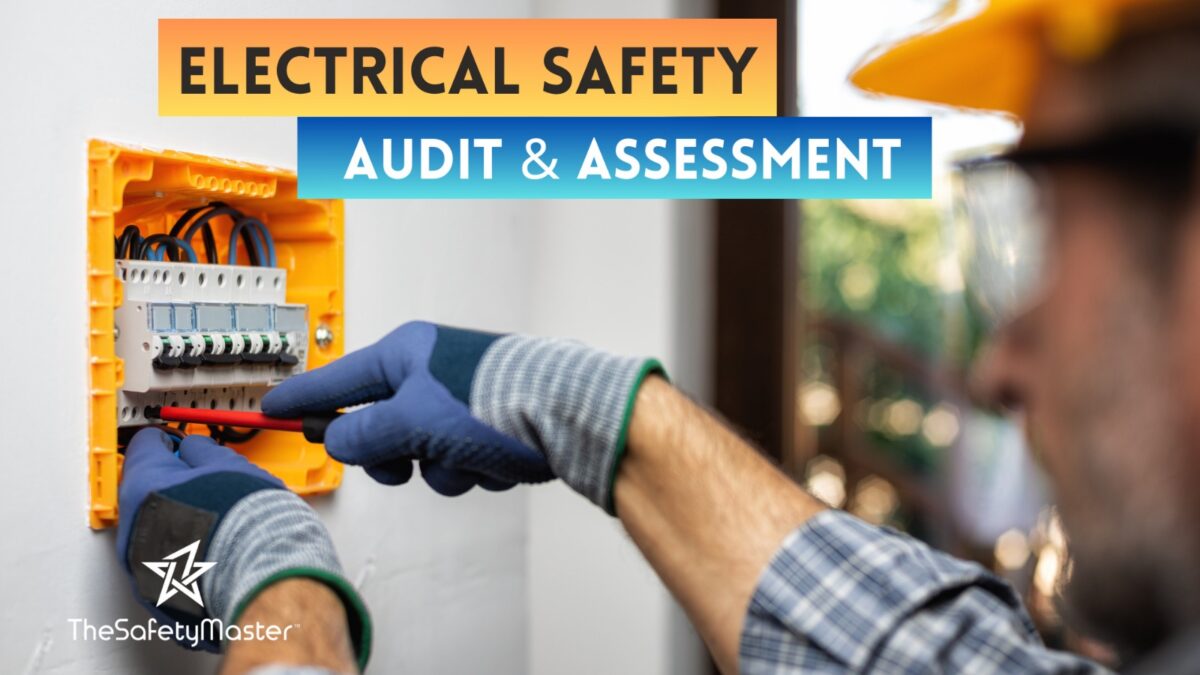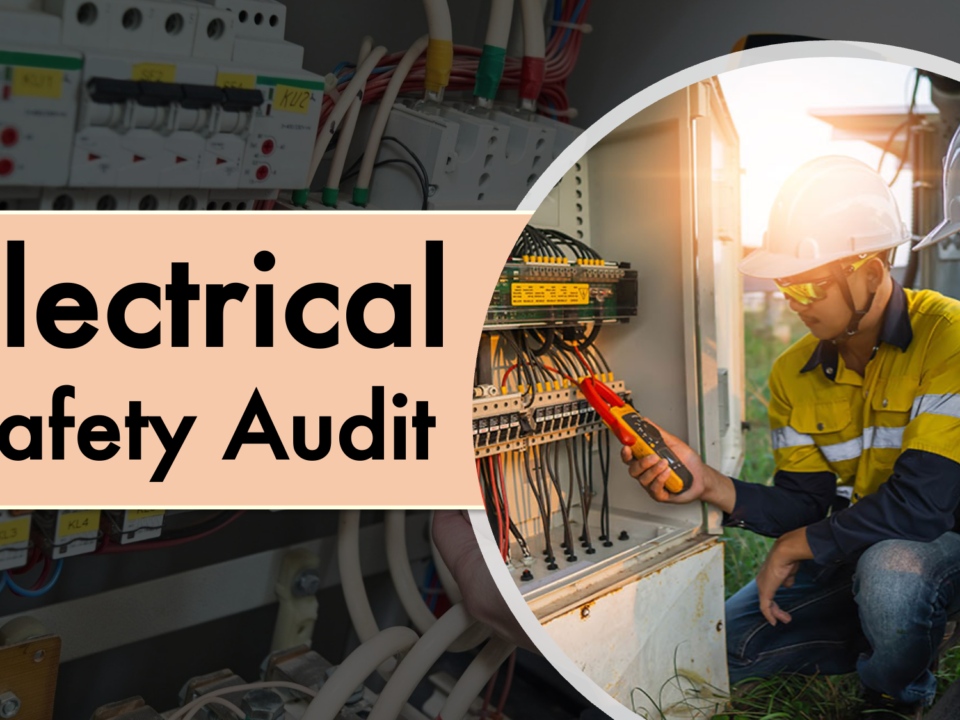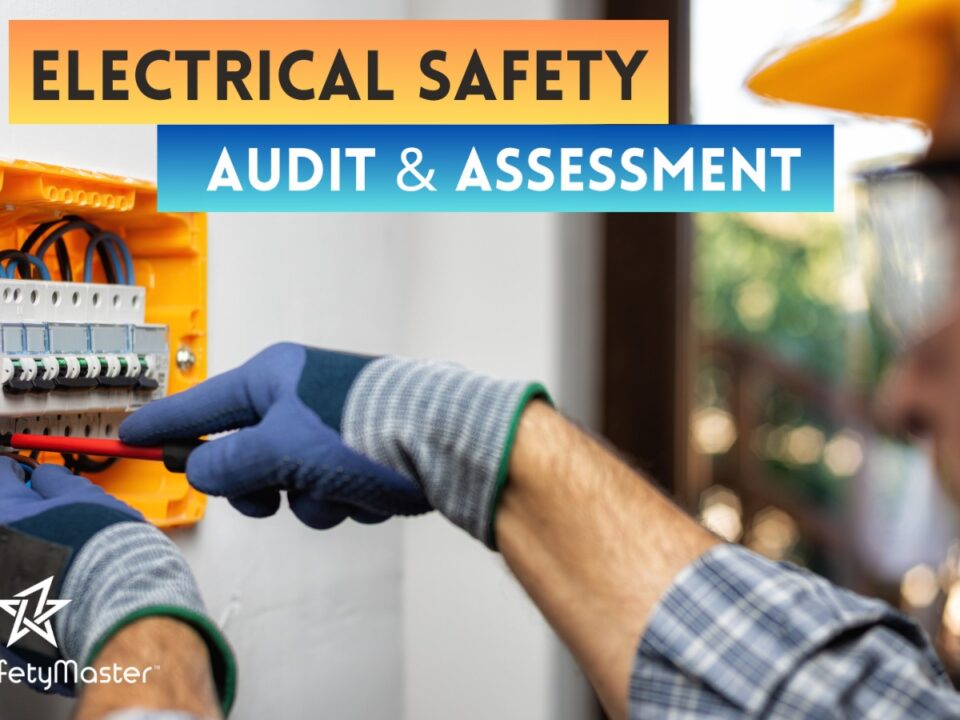Electrifying Safety: Navigating Electrical Safety Audits in Indian Industries

Ensuring Workplace Safety – A Comprehensive Guide to Fire Safety Audits In India Industries
January 6, 2024
Prestartup Safety Review – The Safety Master
January 22, 2024Introduction:
In the fast-paced realm of Indian industries, where technological advancements are transforming the landscape, ensuring the safety of electrical systems is paramount. Electrical Safety Audits emerge as a crucial tool in mitigating risks, preventing accidents, and fostering a secure work environment. This blog delves into the significance of Electrical Safety Audits in Indian industries, elucidating their importance, regulatory framework, key components, and best practices.
Importance of Electrical Safety Audits:
1. Preventing Electrical Accidents:
– Electrical accidents can result in severe injuries, fatalities, and property damage. Electrical Safety Audits proactively identify potential hazards, ensuring the implementation of preventive measures to avert accidents.
2. Equipment Longevity and Reliability:
– Regular audits contribute to the longevity and reliability of electrical equipment. Identifying and rectifying issues promptly helps in maintaining the functionality of electrical systems, reducing downtime and operational disruptions.
3. Compliance with Standards:
– Adherence to electrical safety standards and regulations is imperative. Electrical Safety Audits ensure compliance with the Electricity Act, 2003, and other relevant standards, safeguarding industries from legal repercussions.
Regulatory Framework for Electrical Safety Audits in India:
1. Electricity Act, 2003:
– The Electricity Act, 2003, outlines the legal framework for ensuring safety in electrical installations. Compliance with this act is mandatory, making Electrical Safety Audits a critical component of regulatory compliance.
2. Indian Electricity Rules (IER):
– The IER provides detailed guidelines on electrical safety measures. Industries are required to comply with these rules, covering aspects such as installation, operation, and maintenance of electrical systems.
3. National Electrical Code (NEC):
– The NEC, published by the Bureau of Indian Standards (BIS), serves as a benchmark for electrical safety practices. Electrical Safety Audits help ensure conformity with NEC guidelines.
Key Components of Electrical Safety Audits:
1. Identification of Electrical Hazards:
– Evaluate electrical systems to identify potential hazards such as faulty wiring, overloaded circuits, and outdated equipment. This includes assessing the risk of electrical shocks, fires, and other safety concerns.
2. Equipment Inspection:
– Thoroughly inspect electrical equipment for wear and tear, overheating, loose connections, and signs of corrosion. This involves assessing the condition of cables, switches, panels, and other components.
3. Earthing and Grounding Checks:
– Verify the effectiveness of earthing and grounding systems. Proper grounding is essential for protecting personnel and equipment from electrical faults, ensuring a safe discharge of electrical currents.
4. Review of Electrical Documentation:
– Examine electrical drawings, equipment manuals, and maintenance records. This helps ensure that installations are in accordance with approved plans and that maintenance activities are carried out as per prescribed schedules.
5. Training and Awareness Programs:
– Assess the effectiveness of training programs related to electrical safety. Ensure that employees are well-informed about safe work practices, emergency response procedures, and the proper use of personal protective equipment.
Best Practices for Electrical Safety Audits:
1. Regular Maintenance Schedules:
– Implement regular maintenance schedules for electrical systems. Preventive maintenance reduces the likelihood of equipment failures and ensures the longevity of electrical assets.
2. Employee Involvement:
– Foster a culture of safety by involving employees in the electrical safety process. Encourage reporting of potential hazards and provide avenues for continuous improvement based on employee feedback.
3. Use of Advanced Technologies:
– Leverage advanced technologies such as thermal imaging, power quality analysis, and predictive maintenance tools to enhance the effectiveness of Electrical Safety Audits. These technologies can detect issues before they lead to failures.
4. Emergency Response Drills:
– Conduct emergency response drills to ensure that employees are well-prepared to handle electrical emergencies. This includes training on shutdown procedures, first aid for electrical injuries, and evacuation plans.
Conclusion:
Electrical Safety Audits are indispensable for the sustained growth and safety of Indian industries. By adhering to regulatory requirements, implementing best practices, and prioritizing the well-being of personnel, industries can create a robust electrical safety framework. Investing in electrical safety not only protects lives and assets but also contributes to the overall efficiency and resilience of industrial operations in the dynamic landscape of the Indian industrial sector.



